Swim lingo can feel like code—especially when you’re new to the sport and just trying to keep up.
Swim lingo can sound like a foreign language at first. However, learning it helps you stay connected and confident. As a former swimmer and now a swim mom, I know how overwhelming it feels.
But trust me—once you understand the terms, everything clicks. You’ll support your athlete better, ask smarter questions, and feel part of the team.
Swim Lingo Explained: What Every Swim Parent Needs to Know
Understanding swim lingo isn’t just about knowing the words. It’s about feeling confident on deck and in the stands.
When you know what your swimmer means by “descending 50s” or “getting DQ’d in fly,” you’re part of the conversation. You’re not just cheering—you’re truly connected.
Why Swim Lingo Matters
Connection equals communication. When you understand swim lingo, you can support your athlete with confidence.
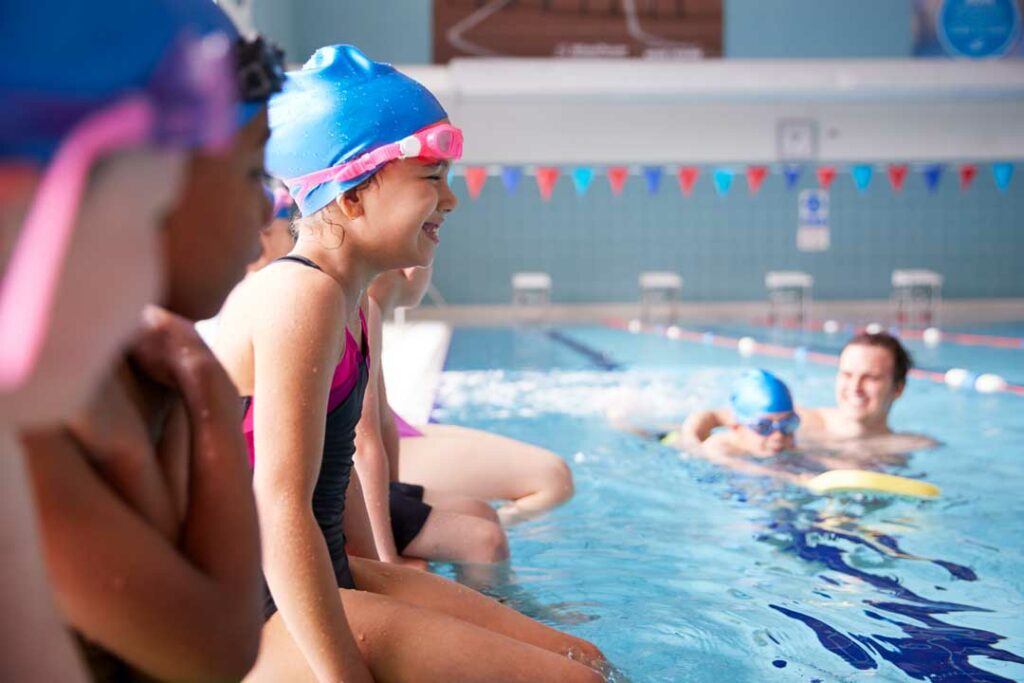
You’ll know what the coach is talking about. You’ll understand practice sets and workouts. You’ll even be able to chat with other swim parents like a pro.
As a former swimmer, I knew the words. But I’ve seen so many parents around me nodding along at practice, unsure of what the coach just said. That’s why learning the lingo is so important—it’s not just about knowing the terms. It’s about being part of the journey.
When you can decode what your swimmer tells you after practice, you become a stronger support system. You’re not just cheering—you’re understanding. And that makes all the difference.
Common Swim Practice Lingo (Parent-Friendly Glossary)
Understanding swim lingo can feel overwhelming at first. Don’t worry—I’ve got you covered! Here’s a quick, parent-friendly guide to the most common swim terms you’ll hear on deck.
Learning this swimming practice vocabulary will help you follow workouts, support your swimmer, and feel confident at every meet.
Let’s break it down by category:
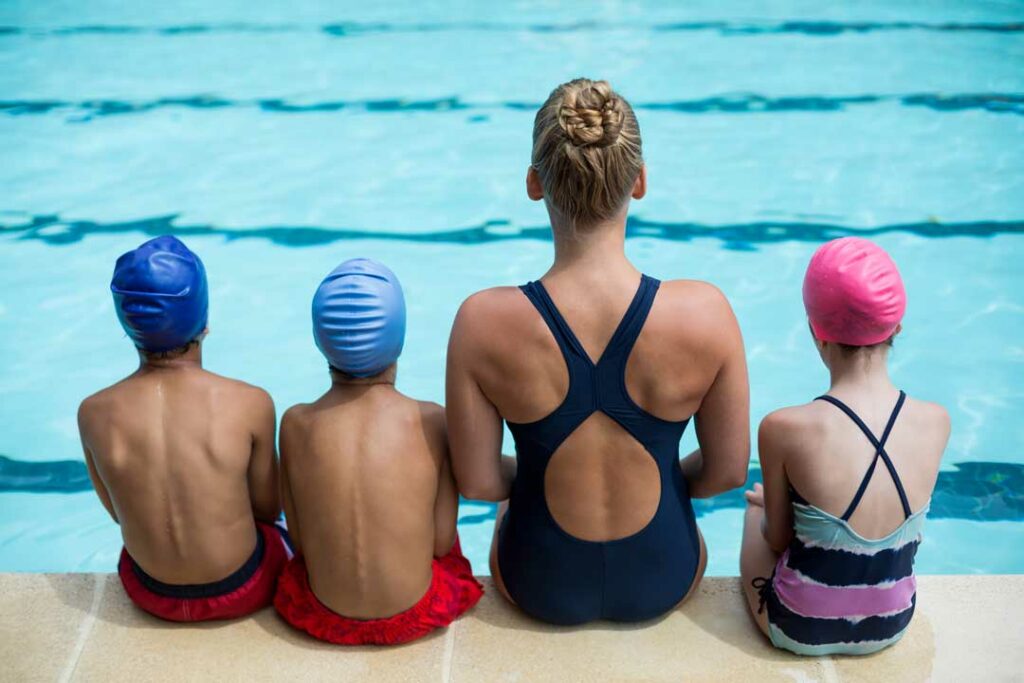
Workout Structure
- Warm-up – Easy swimming to loosen up before the main set.
- Main Set – The heart of the workout, where most of the training happens.
- Cool Down – Slower swimming to help the body recover.
Intervals & Timing
- On the :30 / :45 – Leave the wall every 30 or 45 seconds. It’s all about pace.
- Negative Split – Swim the second half of a set faster than the first.
- Descend Set – Get faster with each repeat. Think of it as a mini race progression.
Strokes & Technique
- IM (Individual Medley) – One race, four strokes: Butterfly, Backstroke, Breaststroke, Freestyle.
- Drill – A specific movement to improve technique (like single-arm freestyle or fingertip drag).
- Streamline – The tight, straight body position after pushing off the wall. It reduces drag.
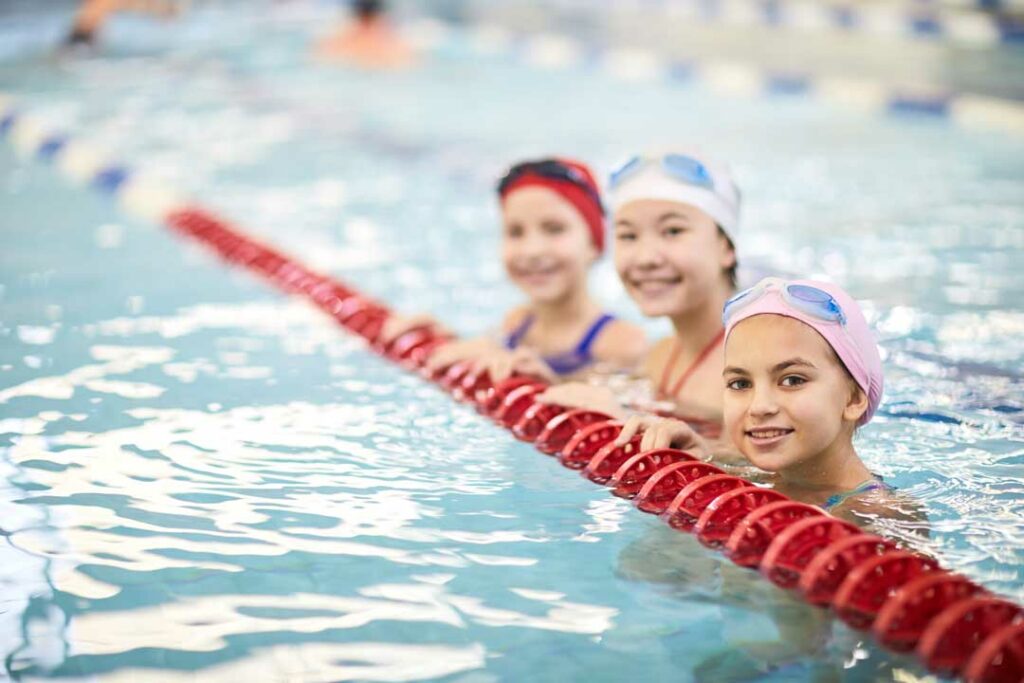
Team & Practice Talk
- Circle Swimming – Swimmers stay to the right side of the lane, just like cars in traffic.
- Lactate Set – A tough, high-intensity set that makes the muscles burn (and builds endurance).
- Taper – Reducing the intensity and volume of practice before a big meet for peak performance.
Confusing But Common
- Sculling – Using only your hands to move through the water, helps develop feel and control.
- Build – Start the swim easy, gradually increase speed to finish strong.
- Kicking with a Board – Kicking only, using a kickboard for support. Builds leg strength and endurance.
Learning these common swim terms will help you feel part of the team—whether you’re in the stands or on the pool deck.
Tips for Learning the Lingo
Learning swim lingo takes time, but trust me, you’ve got this! One of the best ways to stay on top of it all is to write things down. I always kept a swim notebook in my bag—or even just used the notes app on my phone—to jot down new terms, sets, or phrases I heard on deck. It helps so much when you’re trying to remember later.
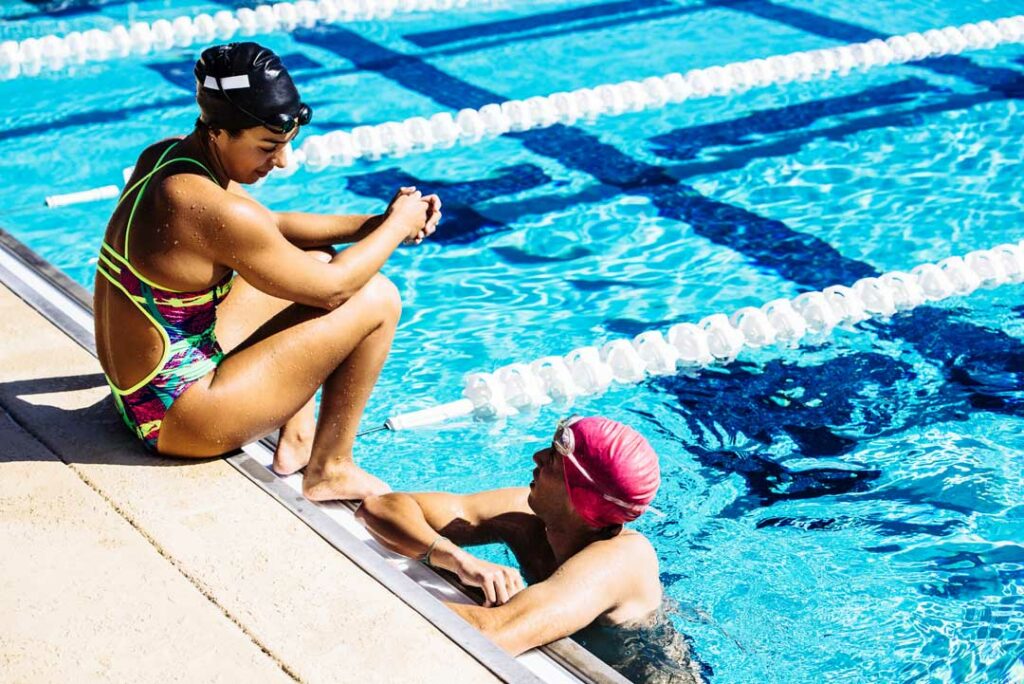
Don’t forget to ask your swimmer for help. They love showing off what they know, and it’s a great way to spark conversation on the car ride home. I ask questions like, “What did that set mean?” or “What’s a negative split again?”—and my daughter loves explaining it to me.
If you’re still unsure, don’t be afraid to ask the coach. Coaches want parents to feel informed and involved. A quick question after practice can clear up a lot of confusion, especially when you’re new.
Finally, lean on the swim parent community. There’s always that one parent who’s been around for years—they know all the lingo, all the tips, and can help you feel less lost. Building those connections isn’t just helpful, it’s part of what makes the swim community so special.
How Knowing the Lingo Helps You Connect
When you understand swim lingo, something shifts. Your swimmer starts to see that you get it. You’re not just there to drive carpool or pack snacks—you’re part of their world.
Knowing the terms makes meet days smoother. You’ll read the heat sheet without confusion, cheer at the right times, and understand what the announcer means when they say, “Swimmers, step up for the 100 free.”
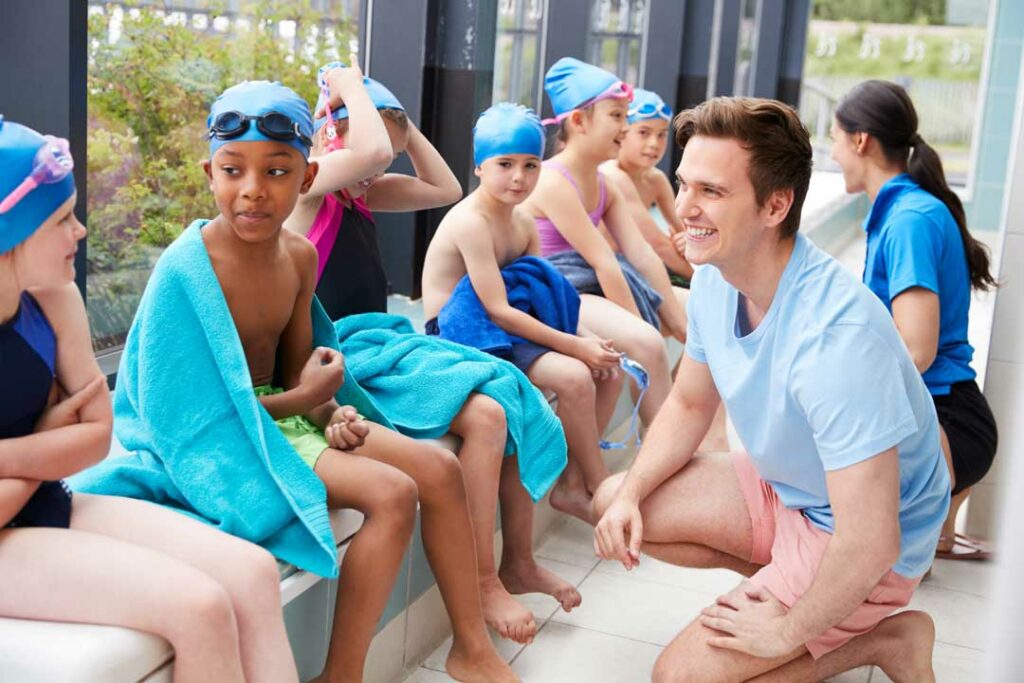
It also boosts your confidence as a swim mom or dad. You’ll feel prepared. You’ll ask smarter questions. You’ll have real conversations with your swimmer about their goals, challenges, and progress.
Even the small things—like knowing what a “pull set” is or when a “taper” starts—build stronger support. These moments show your swimmer you care enough to learn. That connection matters more than you might think.
You Don’t Need to Be Fluent, Just Familiar
Here’s the thing—you don’t have to know it all. Swim lingo can be confusing at first, but you’re not alone. Every swim parent starts somewhere, and every small win counts.
Celebrate those moments—like finally knowing the difference between a DQ and a PR. Those little lightbulb moments matter, and they make you feel more connected to your swimmer’s journey.
So keep learning. Keep asking questions. Keep showing up for your swimmer, because your support makes all the difference.

What swim term stumped you the most at first? Let me know in the comments—I’d love to hear your stories!

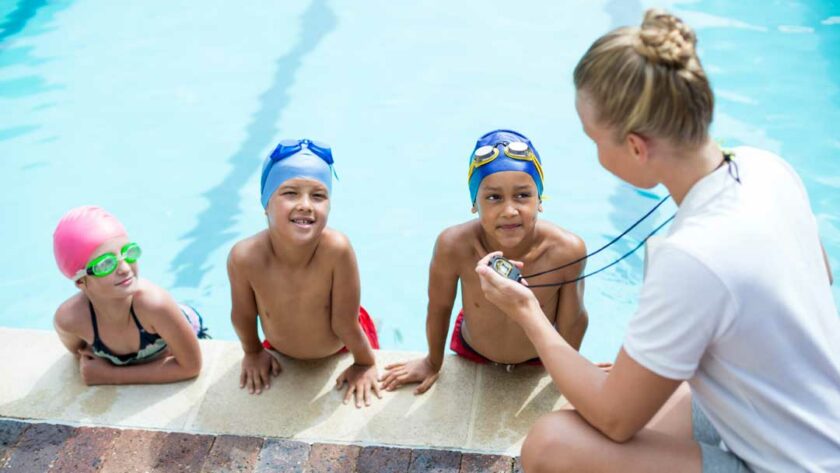
[…] can also help them focus by keeping things simple. Offer to review the heat sheet or clarify the swim lingo if they’re unsure about an event. Even seasoned swimmers sometimes need reassurance about the […]